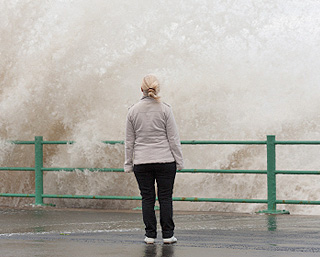 Recognised in the 1980’s, it is thought that around 5% of people suffer from seasonal affective disorder (SAD). It tends to be a recurring depression and seems to especially affect women. The onset begins during their late- teens to their 30’s.Women are around 3 times more likely than men to suffer with SAD. It is less common amongst children and older adults.
Recognised in the 1980’s, it is thought that around 5% of people suffer from seasonal affective disorder (SAD). It tends to be a recurring depression and seems to especially affect women. The onset begins during their late- teens to their 30’s.Women are around 3 times more likely than men to suffer with SAD. It is less common amongst children and older adults.
What is SAD?
SAD is a type of depression which occurs in the winter seasons. Unlike with other types of depression, people with SAD, (although they may experience some depression in the spring and summer seasons) tend to experience their depression only in the autumn and winter months.
It is thought that around a third of people with SAD actually experience hypomania (see Bipolar Disorder) during the summer months.[1] A factor that greatly affects SAD is proximity to the equator. The further a person is living away from the equator, the more likely the condition. Most people feel a little depressed about poor weather, and may feel a bit lower in mood during the winter months, this is known as ‘winter blues’. With SAD, the depression can be far more severe and may affect or interfere with life and day to day existence.
Symptoms of SAD
- Low mood
- Lack of motivation or energy, causing problems at work etc, leading to more stress
- Socially withdrawing
- Being irritable
- Loss of libido
- Feeling very tired and drowsy
- Weight gain, through over-eating
- The opposite to other depressions, you may eat and sleep more
- Anxiety
- Craving Carbohydrates
What causes SAD?
It is not entirely known exactly what causes SAD but it appears to be simply down to lack of daylight (as is in the winter months). The symptoms of SAD indicate that the condition may be due to the hypothalamus, the part of the brain that is stimulated by sunlight. This part of your brain controls sleep, appetite and mood. With some people, the lack of sunlight prevents it from working as it should.
This has 3 effects on people with SAD;
- it increases production of the hormone melatonin, which causes people to feel more tired and lethargic.
- it reduces the production of the hormone serotonin, causing one to experience lower mood.
- it affects circadian rhythm, which helps regulate the body clock, thus causing disturbances with sleep, which can have a negative effect on depression.
Other causes have been linked to factors such as traumatic experiences and physical or verbal abuse. If one person in the family suffers from SAD, then others are more likely to be affected by it, suggesting their may be a genetic link. More anxious people have been shown to be more likely to suffer from SAD.
Treatment Available
As well as professional treatment, the following has been shown to be beneficial;
- Taking regular exercise, exercise has been proven to be very effective in enhancing mood
- Trying to spend time outside, walking or even just sitting, especially if it’s sunny
- Eating a healthy, balanced diet
- Preparing for the seasons
Sometimes, people affected by SAD need more help than this. There are various treatments, effective in helping those with SAD. These treatments can be used on their own or in conjunction with each other
- Antidepressant medication is used and can be very effective.
- Psychological treatment such as Cognitive Behavioural Therapy (CBT) can also help. Psychotherapy is also used.
- Another therapy used to treat this disorder is light therapy. Light therapy, as indicated in the title, involves using bright lights, (with no UV rays, to prevent damage to the skin and eyes), to simulate daylight. This makes the brain produce less melatonin, making a person less sleepy, and more serotonin, helping to lift mood, as mentioned above.
- Light therapy can be effective, though the reactions to it are mixed. If it is going to work, people usually would start feeling results within a week or so. It also seems to work better when used in the morning. The problem with light therapy is the effects are short term, so it may help one winter but it doesn’t cure the problem. The person is likely to suffer from SAD again next winter. A few side effects of light therapy may be feeling a bit anxious or nervous, getting headaches or trouble sleeping.
If you are concerned that you or someone you know may require help and advice please call the Via Clinic on 01372 363939
[1] Rcpsych.ac.uk